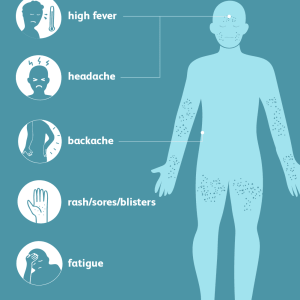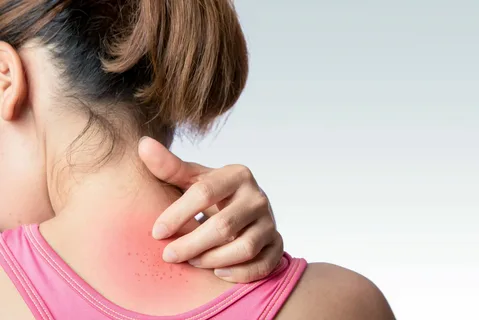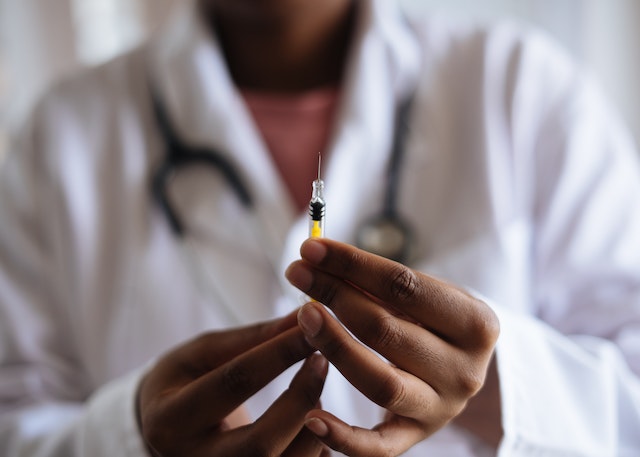Introduction
Spotting Heat Rash, also known as prickly heat or miliaria, is a common skin condition that occurs when sweat becomes trapped in the sweat ducts, leading to inflammation and irritation. While heat rash is typically harmless, it can cause discomfort and itching, especially during hot and humid weather. Recognizing the symptoms of heat rash and taking appropriate action is essential for managing this condition effectively. In this comprehensive guide, we’ll explore the symptoms of heat rash, risk factors, and strategies for prevention and treatment.
Understanding Heat Rash
Heat rash occurs when sweat ducts become clogged and sweat is trapped beneath the skin’s surface. This can occur in hot and humid environments or when individuals engage in activities that cause excessive sweating. Heat rash typically presents as small, red bumps or blisters on the skin, often accompanied by itching or a prickling sensation.
Symptoms of Heat Rash
- Small, red bumps or blisters
- Itching or prickling sensation
- Areas of the body prone to heat rash include the neck, chest, back, groin, and armpits
- Discomfort or irritation, especially in hot and humid conditions

Risk Factors for Heat Rash
Several factors can increase the risk of developing heat rash, including:
- Hot and humid weather
- Intense physical activity that leads to excessive sweating
- Wearing tight or restrictive clothing that traps sweat against the skin
- Certain medications that can increase sweating or block sweat ducts
- Infants and young children are particularly susceptible to heat rash due to their underdeveloped sweat glands and inability to regulate body temperature effectively
Prevention Strategies
1. Stay Cool and Dry
Avoid prolonged exposure to hot and humid environments, especially during peak sun hours. Take frequent breaks in shaded or air-conditioned areas and use fans or air conditioning to keep indoor spaces cool. Wear lightweight, loose-fitting clothing made from breathable fabrics like cotton to allow for proper air circulation.
2. Practice Good Hygiene
Keep the skin clean and dry by showering regularly and gently patting the skin dry after bathing. Avoid using harsh soaps or skincare products that can irritate the skin and contribute to heat rash. Use talcum powder or cornstarch-based powders to absorb excess moisture and prevent sweat buildup.
3. Stay Hydrated
Drink plenty of fluids, especially water, to stay hydrated and help regulate body temperature. Avoid excessive consumption of caffeine or alcohol, as these can contribute to dehydration and increase the risk of heat-related illnesses.
4. Avoid Overexertion
Limit intense physical activity, particularly during hot and humid weather conditions. Take breaks as needed and listen to your body’s signals to avoid overheating and excessive sweating. Explore More About (Blood Pressure Monitoring)

Treatment Options
1. Keep the Affected Area Cool
Apply cold compresses or take cool baths to soothe irritated skin and reduce inflammation. Avoid hot water and harsh soaps, as these can further irritate the skin and exacerbate heat rash symptoms.
2. Keep the Skin Dry
Ensure the affected area remains clean and dry to prevent further irritation and promote healing. Avoid tight or occlusive clothing that can trap moisture against the skin and worsen heat rash.
3. Calamine Lotion or Hydrocortisone Cream
Apply calamine lotion or over-the-counter hydrocortisone cream to alleviate itching and discomfort associated with heat rash. These products can help reduce inflammation and promote healing of the affected skin.

4. Seek Medical Attention if Necessary
If heat rash symptoms persist or worsen despite home treatment, or if signs of infection such as pus or increased redness develop, seek medical attention promptly. A healthcare professional can provide further evaluation and recommend appropriate treatment options.
Conclusion
Heat rash is a common skin condition that can occur when sweat becomes trapped in the sweat ducts, leading to inflammation and irritation. By recognizing the symptoms of heat rash and taking appropriate action, individuals can effectively manage this condition and prevent complications. By following prevention strategies such as staying cool and dry, practicing good hygiene, and avoiding overexertion, individuals can reduce the risk of developing heat rash and enjoy a comfortable and healthy summer season.










